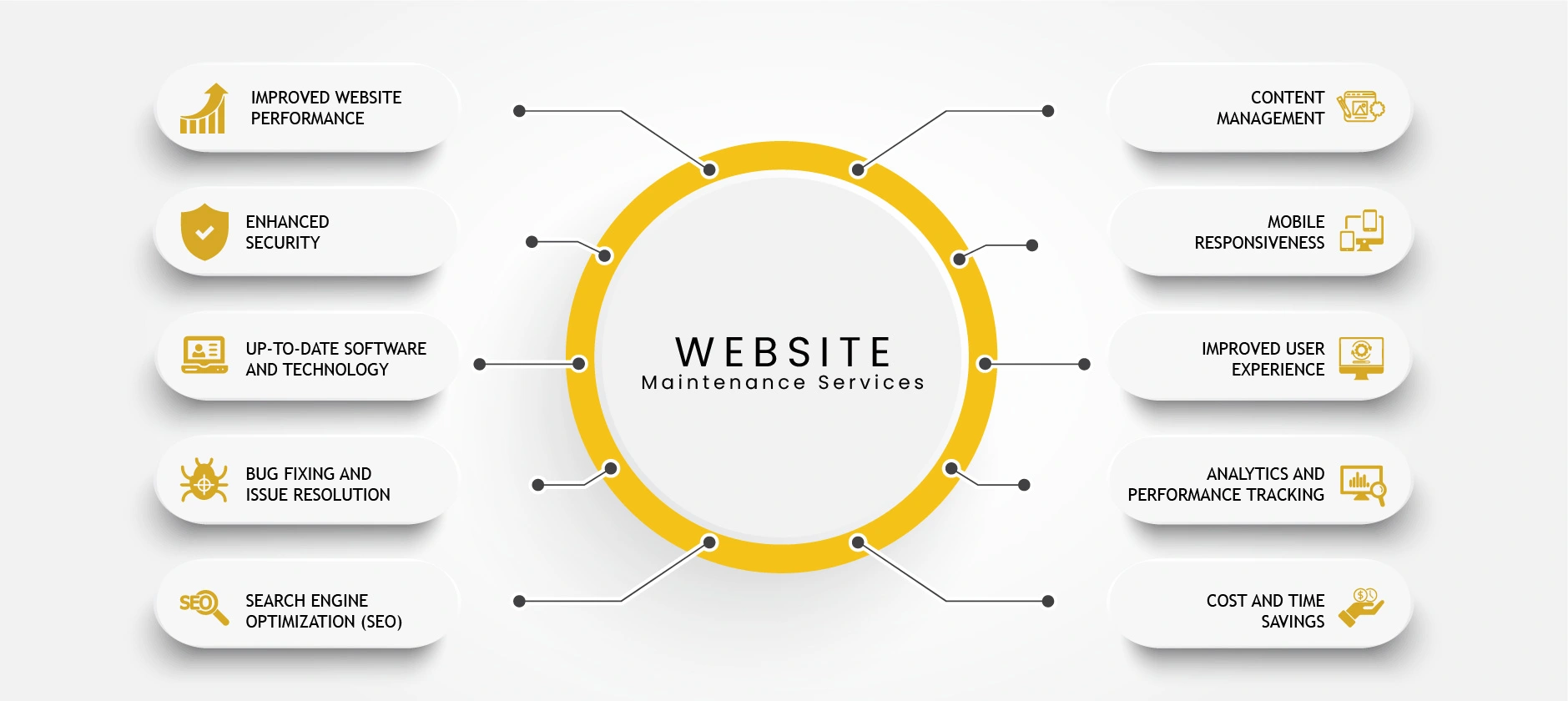A successful business website is more than just a pretty online brochure; it’s a dynamic tool that drives leads, fosters customer engagement, and ultimately boosts your bottom line. Effective business website management encompasses a wide range of activities, from initial design and development to ongoing maintenance and optimization. Neglecting any aspect of this process can lead to a stagnant online presence, missed opportunities, and a negative impact on your brand reputation. This comprehensive guide explores the essential elements of business website management, providing actionable strategies for achieving long-term success.
The Foundation: Design and Development
The initial design and development phase lays the groundwork for a successful website. Consider these key factors:
- User Experience (UX): Is your site easy to navigate? Can visitors find what they’re looking for quickly and intuitively? A positive UX is crucial for retaining visitors and encouraging conversions.
- Mobile Responsiveness: With the majority of web traffic now coming from mobile devices, your website must be fully responsive and adapt seamlessly to different screen sizes.
- Search Engine Optimization (SEO): Implement SEO best practices from the outset, including keyword research, optimized content, and proper website structure.
- Clear Call to Actions (CTAs): Guide visitors towards desired actions, such as contacting you, making a purchase, or subscribing to your newsletter.
Content is King: Creating Engaging and Valuable Information
High-quality, relevant content is the lifeblood of any successful website. Focus on creating content that:
- Addresses your target audience’s needs and interests.
- Is informative, engaging, and well-written.
- Is optimized for search engines.
- Is regularly updated to keep your site fresh and relevant.
Content Formats to Consider:
- Blog posts
- Case studies
- White papers
- Videos
- Infographics
The Ongoing Process: Website Maintenance and Optimization
Launching your website is just the beginning. Ongoing maintenance and optimization are essential for ensuring its long-term success. This is where a strong business website management plan really pays off.
- Regular Security Updates: Protect your website from hackers and malware by keeping your software and plugins up to date.
- Performance Monitoring: Track your website’s performance metrics, such as page load speed and bounce rate, to identify areas for improvement.
- Content Updates: Regularly update your content to keep it fresh and relevant, and to improve your SEO ranking.
- SEO Optimization: Continue to optimize your website for search engines by conducting keyword research, building backlinks, and monitoring your ranking.
Comparative Table: DIY vs. Professional Website Management
| Feature | DIY Website Management | Professional Website Management |
|---|---|---|
| Cost | Lower initial cost | Higher initial cost |
| Time Commitment | Significant time investment required | Less time commitment required |
| Expertise | Requires technical skills and knowledge | Leverages the expertise of professionals |
| Results | Potential for slower growth and less effective results | Potential for faster growth and more effective results |
Here is the continuation of the provided text:
To further refine your approach to business website management, consider incorporating these advanced strategies for a competitive edge:
Advanced Strategies for Website Success
- A/B Testing: Experiment with different versions of your website elements (e.g., headlines, CTAs, images) to identify what resonates best with your audience. Use A/B testing tools to track results and make data-driven decisions.
- Personalization: Tailor the website experience to individual users based on their behavior, demographics, or interests. This can involve displaying personalized content, recommendations, or offers.
- Marketing Automation: Integrate your website with marketing automation tools to streamline tasks such as email marketing, lead nurturing, and customer segmentation.
- Analytics Deep Dive: Go beyond basic website traffic reports and delve into detailed analytics to understand user behavior, identify pain points, and optimize the customer journey. Track key performance indicators (KPIs) to measure progress and identify areas for improvement.
Building a Strong Online Presence Beyond Your Website
Your website is the central hub of your online presence, but it’s essential to extend your reach through other channels:
- Social Media Marketing: Engage with your target audience on social media platforms, share valuable content, and drive traffic back to your website.
- Email Marketing: Build an email list and communicate with your subscribers through targeted email campaigns. Offer valuable content, promotions, and updates to keep them engaged.
- Search Engine Marketing (SEM): Invest in paid advertising on search engines to drive targeted traffic to your website. Use keyword research and ad optimization to maximize your ROI.
- Online Reputation Management: Monitor your online reputation and respond to reviews and feedback promptly. Address any negative comments or complaints professionally and constructively.
Choosing the Right Tools and Technologies
Selecting the right tools and technologies is crucial for effective website management. Consider these factors:
- Scalability: Choose tools that can scale as your business grows.
- Integration: Ensure that your tools integrate seamlessly with each other.
- Ease of Use: Select tools that are user-friendly and easy to learn.
- Support: Ensure that the vendor provides adequate support and documentation.
Examples of useful tools include:
- Content Management Systems (CMS): WordPress, Drupal, Joomla
- Analytics Platforms: Google Analytics, Adobe Analytics
- Marketing Automation Tools: HubSpot, Marketo, Pardot
- SEO Tools: SEMrush, Ahrefs, Moz
Remember, successful business website management is not a one-time project, but an ongoing journey of learning, adaptation, and optimization. By embracing these strategies and staying up-to-date with the latest trends, you can create a website that drives business growth and achieves your online goals. The consistent effort in refining your website will enhance your brand and improve conversions.

